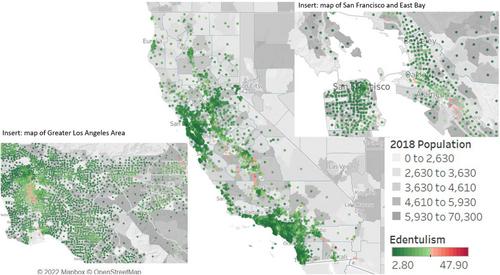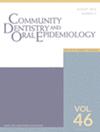Census tract geospatial analysis comparing social determinants of health with tooth loss in California seniors: An ecologic study
Abstract
Objectives
Individual-level social determinant of health (SDOH) measures alone may insufficiently explain disparities in edentulism among seniors. Therefore, the authors examined the correlation of census tract-level SDOH and residential racial segregation measures with edentulism in Californian adults aged ≥65 years old.
Methods
Explanatory variables were obtained from Healthy Places Index (HPI), the National Cancer Institute and diversitydatakids.org. The edentulism outcome variable was obtained from CDC's PLACES small area estimates from the 2018 Behavioral Risk Factor Surveillance System data. Pearson and Spearman rank correlations were estimated. Multiple linear regression and multi-collinearity evaluations were performed. The Global Moran's I statistic assessed partial autocorrelation within census tracts.
Results
Pearson and Spearman correlations were similar, supporting robustness. HPI, an area measure of advantage, strongly negatively correlated with edentulism prevalence [correlation coefficient: −0.87; 95% confidence interval (CI): −0.87, −0.86]. A change of 1.0 in HPI corresponded to an estimated decrease in edentulism prevalence of 5.9% (linear model adjusted R2 = 0.78). Racially segregated census tracts with Hispanics or Blacks alone were positively correlated with edentulism prevalence [0.60, 95% CI: 0.58, 0.62; and 0.33, 95% CI: 0.31, 0.35, respectively]. The converse was seen in census tracts with non-Hispanic Whites alone [−0.57, 95% CI: −0.58, −0.55]. Global Moran's I statistic for edentulism (0.13) and HPI scores (0.19) were significant (both p < .001) indicating geospatial autocorrelation.
Conclusions
Higher disadvantage and minority racial segregation within census tracts were positively correlated with edentulism prevalence. Future research and policy should consider possible interventions improving SDOH to reduce oral health inequities.


 求助内容:
求助内容: 应助结果提醒方式:
应助结果提醒方式:


